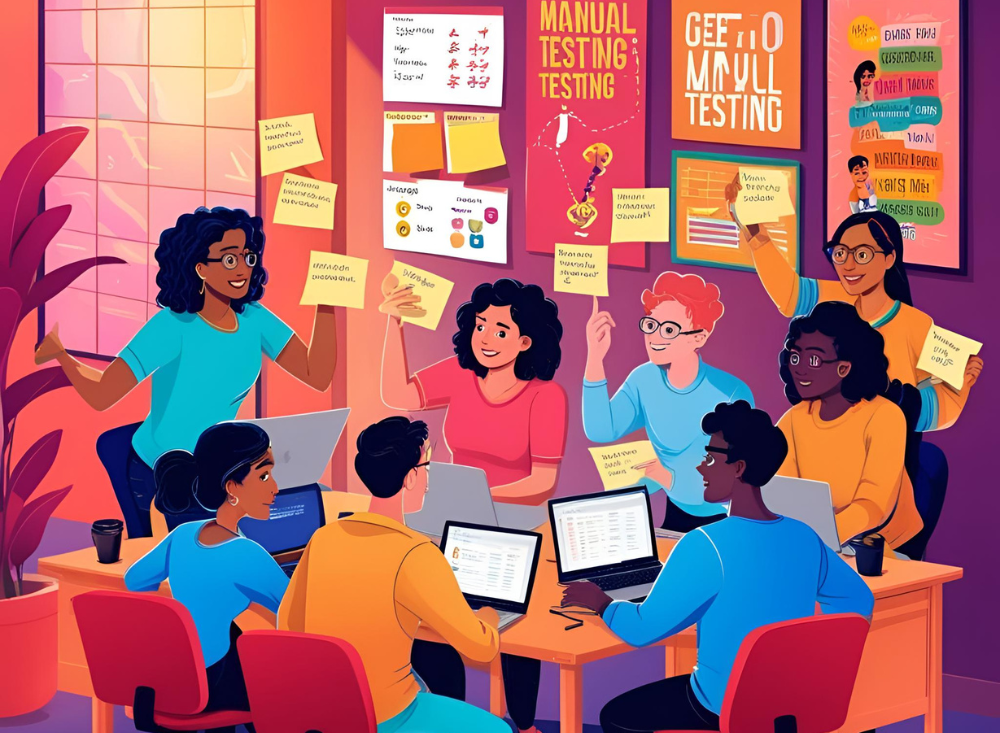
In an era dominated by digital transformation and rapid software delivery cycles, the role of manual testing often comes into question. With widespread adoption of GenQE (General Quality Engineering) principles and the rise of automation strategies, some wonder: does manual testing still matter? Let’s explore the relevance of manual testing and where it stands in the evolving landscape of quality assurance.
Understanding Manual Testing
Manual testing is the process of validating software functionality without the assistance of automated scripts. A tester plays the role of an end-user, examining the application for usability, inconsistencies, and defects. Unlike automation, which focuses on speed and repeatability, manual testing brings a human perspective — essential for understanding real-world user behavior and experience.
The Rise of Automation Testing
There’s no denying that automation has become a crucial part of GenQE. Repetitive tasks, data-heavy test cases, and regression cycles are ideal candidates for automation. The allure of faster feedback and reduced human error has led many organizations to invest heavily in automated strategies as part of their continuous integration and delivery pipelines.
Areas Where Automation Excels
Automation excels in:
- Regression Testing: Quickly checking existing functionalities across releases.
- Load and Performance Testing: Simulating thousands of users simultaneously.
- Data-driven Testing: Repeating tests with large sets of input values.
- Consistency and Speed: Running the same tests across environments with minimal deviation.
In GenQE frameworks, automation improves overall test coverage and allows for faster iteration — key benefits in modern software development lifecycles.
When is Test Automation Not Desirable?
Despite its strengths, automation isn’t always the right answer:
- Exploratory Testing: Automation lacks the intuition and critical thinking that human testers bring.
- Usability and UX Feedback: Machines can’t fully understand visual appeal, accessibility nuances, or user frustration.
- Short-Lived Projects: When time or budget constraints are tight, manual testing might offer a more practical return on investment.
- Constantly Changing UI: Tests tied to UI elements can break easily, requiring frequent maintenance that offsets automation’s efficiency.
In such cases, manual testing continues to be the better choice within GenQE strategies.
Does Manual Testing Have a Future?
Absolutely. Manual testing isn’t being replaced; it’s evolving. In a GenQE model, testing is no longer a phase — it’s a mindset shared across development, operations, and QA. Manual testers are transitioning into quality engineers who not only execute tests but contribute to design reviews, risk analysis, and user-centric thinking.
Manual testing’s strength lies in scenarios where human insight is irreplaceable. From user acceptance testing to complex exploratory workflows, its value persists.
Is Manual Testing a Good Career?
Yes, especially for those who are curious, analytical, and adaptable. Modern QA isn’t just about writing test cases; it’s about understanding systems, users, and impact. A manual tester with strong domain knowledge and communication skills plays a vital role in ensuring overall product quality — especially when aligned with GenQE principles.
Moreover, the career path is not static. Manual testers can branch into areas such as test strategy, product analysis, or even automation and DevOps, depending on their interest and growth goals.
The Future of Manual Testing
The future of manual testing lies in integration. It will coexist with automation under the umbrella of GenQE. Roles will become hybrid, blending manual expertise with technical fluency. Emphasis will shift from just “finding bugs” to “preventing defects” and enhancing user experience.
Manual testers will be key in:
- Collaborating in cross-functional teams
- Providing real-time feedback in agile sprints
- Supporting ethical and inclusive testing practices
- Ensuring user-focused outcomes over raw code correctness
Is Manual Testing Dead? The Verdict
Manual testing is far from dead — it’s maturing. In the GenQE landscape, manual testing remains a vital part of holistic quality strategies. While automation handles the repetitive and scalable aspects of testing, manual testing brings empathy, creativity, and intuition — qualities no script can replicate.
In the end, the most successful QA teams will be those that balance automation and manual insight, aligning their approach with the principles of GenQE: continuous quality, shared ownership, and relentless improvement.